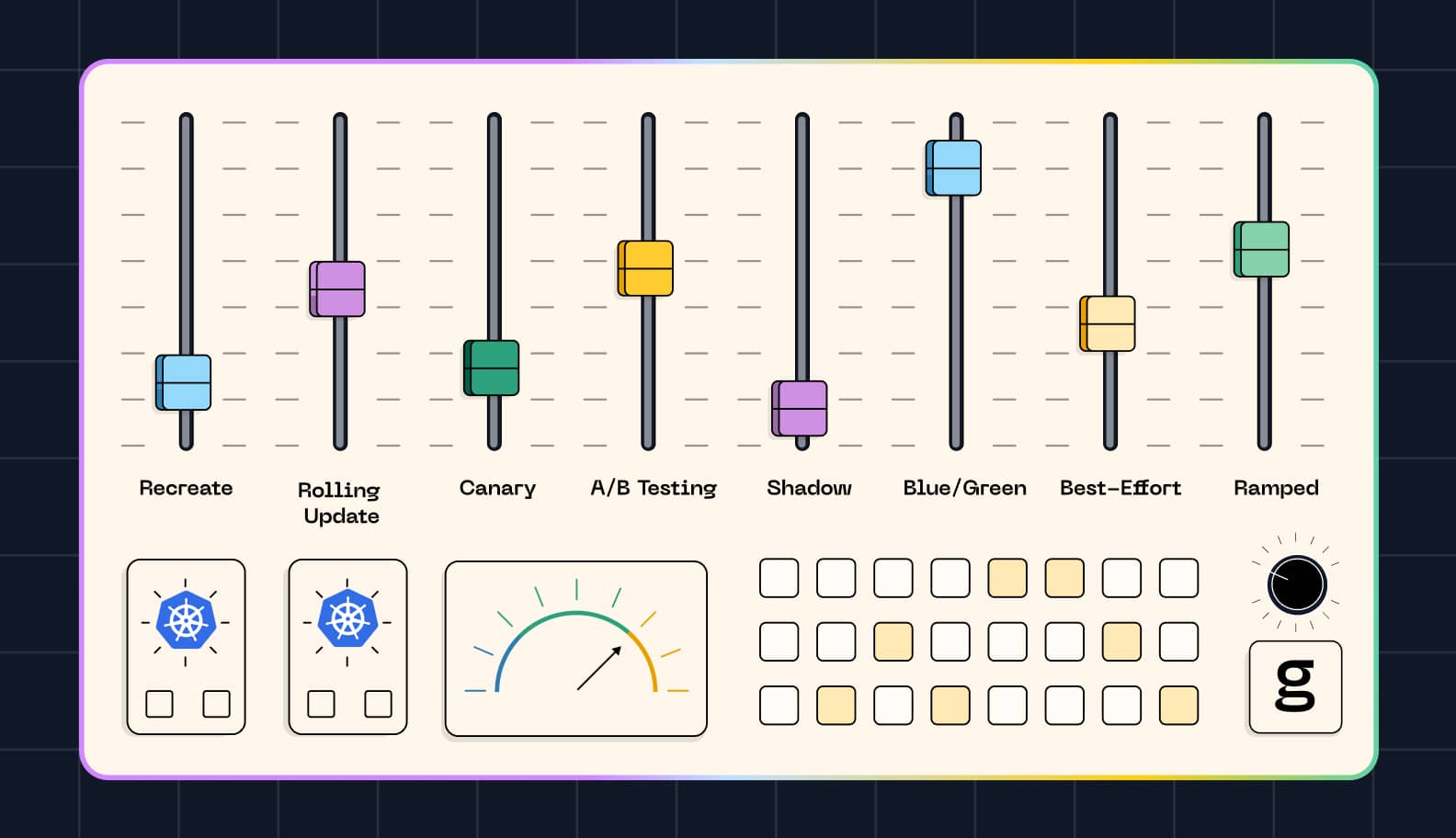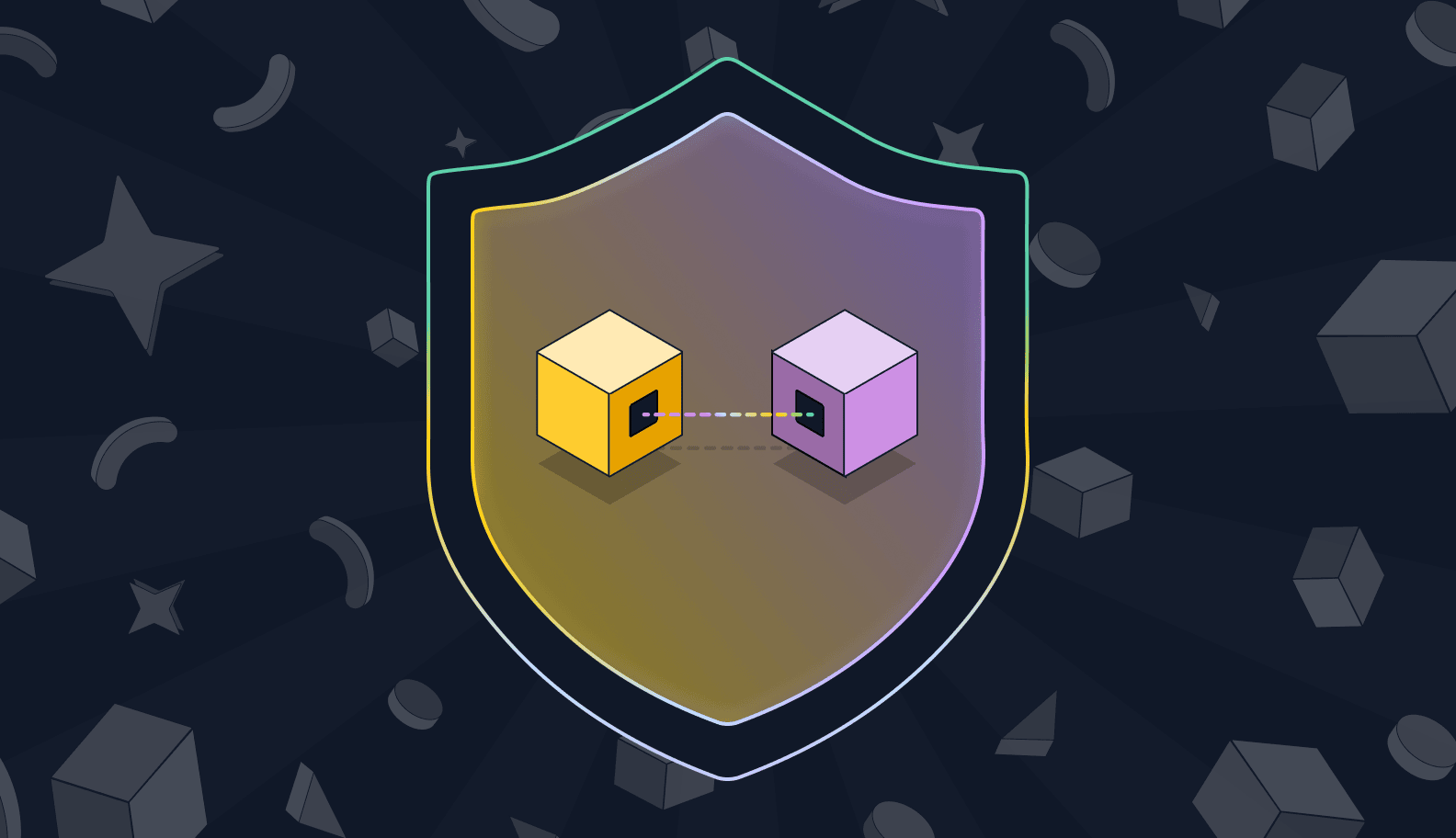
.jpg)
At first glance, it might seem a bit odd to run Kubernetes, the poster child of cloud-native computing, on-premises. After all, if the whole idea of deploying containerized applications using an orchestrator like Kubernetes is to create highly flexible, scalable environments, why would you restrict yourself to on-prem infrastructure – which is typically less scalable and flexible than cloud-based alternatives?
Well, for several potential reasons. As this article explains, running Kubernetes on-premises can help you to double-down on certain Kubernetes benefits, such as by increasing cost-effectiveness. On-prem Kubernetes may also offer advantages like greater compliance and privacy controls. But there are also many possible pitfalls to watch out for, and several challenges to conquer, if you want to make the most of on-premises Kubernetes.
Can Kubernetes run on-premises?
The answer to the question “Can Kubernetes run on-premises” is a definitive “yes.” Although Kubernetes is often associated with cloud-based application deployments, it is absolutely compatible with an on-premises deployment, too.
Running Kubernetes on-premises vs. in the cloud
Running Kubernetes on-premises means setting up a Kubernetes cluster using private infrastructure that you own and control, as opposed to servers running in a public cloud. In other words, in on-prem Kubernetes, all of the nodes – your control plane node (or nodes), as well as all worker nodes – are physical or virtual servers that you own. This implies that all Kubernetes components – from the API server and Etcd, to kubelet, to the Kubernetes dashboard, and everything in between – run on private hardware.
From Kubernetes’s perspective, a server is basically just a server, and Kubernetes doesn’t really care – or even know – whether the servers you use to build a cluster are running in an on-prem server room or a public cloud data center.
There is a small caveat to that statement: Certain Kubernetes distributions, such as Amazon EKS, offer special features that are only available if you run Kubernetes on certain cloud platforms. For example, EKS Autoscaling, an EKS feature that automatically adds worker nodes to a cluster in response to increases in load, only works because EKS runs on servers managed by Amazon. That said, in virtually all other respects, Kubernetes works the same, and provides the same features, regardless of whether it’s on-premises or in a public cloud.
Benefits and challenges of running Kubernetes on-premises
Now that we’ve explained that you can run Kubernetes on-prem, let’s talk about why you may want to do so – as well as the challenges you will need to overcome.
Benefits of an on premise Kubernetes cluster
There is a long list of potential benefits you can attain by running Kubernetes on-prem.
Compliance and data privacy
Arguably the biggest benefit of on-premises Kubernetes is easier control over compliance and data privacy.
When Kubernetes runs on your own private infrastructure, you can configure and monitor the infrastructure however you want. In addition, you have total control over who can access the infrastructure and what they can do with it. These capabilities may help meet compliance and data privacy goals. For instance, if you need to prove that data stored in Kubernetes resides in a specific geographic area, you can more easily do that when you run Kubernetes on-prem.
For the record, it’s often possible to meet stringent compliance and data privacy requirements in the cloud, too. But at the end of the day, on-prem Kubernetes provides a level of control you just won’t get from the public cloud.
Business policy reasons
Along similar lines, your business may establish a policy requiring certain workloads to run on-premises, even if there is no compliance rule that mandates it. Organizations sometimes establish policies like these for cost-control purposes, because they worry about cloud computing bills potentially growing out of control. They may also require on-prem deployments for performance or privacy reasons.
Deploying applications faster
Running Kubernetes on premises may increase application deployment speed, especially if your apps are developed and built on-prem. The reason why is that moving applications into the cloud can take time due to network bandwidth limitations. But if you run Kubernetes on-prem, you can quickly move application releases from your development environment into your Kubernetes cluster without being constrained by Internet connections.
To be clear, the process for deploying resources in Kubernetes itself is not inherently faster on-prem. Deployment only works as fast as your API server can proceed, no matter the underlying infrastructure. But getting the actual application images into the Kubernetes environment may be faster on-prem. (Of course, if you build your apps in the cloud, the opposite is true; in that case, cloud-based Kubernetes will typically result in faster deployment because the apps are already in the cloud environment.)
Being cloud-agnostic to avoid lock-in
In some respects, running Kubernetes on premises makes it easier to avoid becoming locked into a specific public cloud. If you run Kubernetes using a public cloud vendor’s distribution, like Amazon EKS or Azure AKS, migrating to a different cloud is not a trivial affair. But by running on-prem, you remain in total control, which helps achieve a cloud-agnostic strategy.
Improving resource utilization
Kubernetes doesn’t automatically consume resources more efficiently on-prem, but if you already own on-premises hardware, running Kubernetes on-prem allows you to utilize those hardware resources fully – as opposed to letting them sit idle, which would waste your investment.
Cost
In some cases, on-premises Kubernetes may help reduce costs, especially if you run it on infrastructure you already own and have paid for.
In the cloud, you would have to pay on an ongoing basis for the infrastructure Kubernetes consumes. You may also have to pay cluster management fees, depending on which distribution you use. But on-prem, you don’t have any major infrastructure costs once you’ve set up your Kubernetes environment. This means that, in the long run, on-premises Kubernetes may prove more cost-effective.
It’s worth noting, too, that predicting Kubernetes costs can be more challenging in the cloud due to the complex pricing schedules of cloud vendors and the fact that bills will vary depending on how many resources you consume. In an on-prem environment, however, costs are easier to predict because your only major cost is the price of the infrastructure, which is a straightforward, one-time expense.
Challenges of running Kubernetes on-premises
On the other hand, setting up and running Kubernetes on-premises can be more challenging in a variety of ways.
Load balancing
In the cloud, setting up a load balancer is typically as easy as deploying one through the cloud console or CLI, and then configuring some basic rules. On-prem, however, load balancers tend to be more complex to deploy because they’re not available as a service. That means you have to install a load balancer manually from scratch. You may also need to configure your on-prem network to support your load balancer.
Networking
Speaking of the network, networking in general is often more complex to configure for an on-premises Kubernetes environment. You need to ensure that each of the nodes in your cluster has the appropriate level of connectivity. You may also have to manage firewall and routing rules in your on-premises switches to allow traffic to flow properly.
Network configuration is required to run Kubernetes in the cloud, too. But because you’re dealing with software-defined networks, and because many cloud-based Kubernetes distributions offer out-of-the-box networking integrations with cloud environments, cloud networking tends to be complex to set up and manage.
Availability
Infrastructure can and does fail in the cloud, just as it does on-prem. However, most on-prem environments have higher rates of downtime than major public clouds. As a result, the risks of loss of availability for on-premises Kubernetes are greater than for cloud-based Kubernetes.
Persistent storage
In the cloud, you can take advantage of virtually unlimited storage infrastructure to provide persistent storage for Kubernetes. With on-prem K8s, however, you must set up storage media yourself, adding to the complexity of Kubernetes deployment.
Monitoring
Monitoring Kubernetes isn’t necessarily easier in the cloud than on-prem. But cloud environments provide access to built-in monitoring services, like AWS CloudWatch, that integrate easily with the same clouds’ Kubernetes environments. In this sense, setting up monitoring tools is simpler in the cloud. (Whether cloud vendors’ native monitoring services are as rich and powerful as third-party solutions is a separate matter.)
How to install and configure a Kubernetes cluster on-premises
The exact process for installing and configuring an on-prem Kubernetes cluster will vary depending on which Kubernetes distribution you are using and how you choose to set it up. But in general, the main steps include the following:
- Deploy on-prem hardware: Set up the servers that will operate as nodes in your Kubernetes cluster, making sure that each of them has network connectivity.
- Install the cluster’s control plane node: Using the installation tool provided by your distribution, install Kubernetes on the server that you intend to use as your Kubernetes control plane node. This process will install the API server, Etcd, and other control plane components.
- Install worker nodes: After the control plane node is running, install Kubernetes on additional servers, which will operate as worker nodes, and join them to your cluster. Again, most distributions offer installation tools for this purpose.
- (Optional) install additional control plane nodes: If you want to create a highly available cluster, set up one or more additional control plane nodes and join them to the cluster.
Deploy add-ons or optional configurations: Once your cluster is up and running, you can set up any additional desired tooling, such as load balancers or monitoring services.

Best practices for Kubernetes on-premises
To get the most out of on-premises Kubernetes, consider the following best practices.
Staffing your team appropriately
On the whole, running Kubernetes on-premises is more complex than running it in the cloud. As a result, you’ll need a team that is capable of managing physical hardware, as well as handling the complications of running a Kubernetes cluster on top of private servers.
Back up data off-site
To reduce the risk of losing data in the event that your local infrastructure is destroyed (which could happen due to a fire or flood, for example), it’s a best practice to back up your Kubernetes data and configurations to an external site – such as a geographically separate private data center or a public cloud.
Plan for scale
Running out of sufficient hardware resources for an on-prem Kubernetes cluster is problematic because acquiring and setting up new servers takes time – and you don’t want your workloads to crash while you wait on a new server to arrive in the mail.
For that reason, be sure to evaluate how many hardware resources you’ll need and set up an appropriate number of servers. Giving yourself some extra server capacity beyond your expected maximum requirements is a best practice so that you’ll have breathing room in the event your workloads consume more CPU or memory than you planned.
In addition, monitor resource consumption continuously so that you will know if node resources are beginning to become maxed out – in which case you’ll want to add more on-prem servers before you run out of capacity.
Consider bare metal vs. virtual servers
When you run Kubernetes on premises, it’s easy to set up nodes using physical servers if desired. (You can also obtain physical server instances in the cloud, but they are expensive, and most cloud servers are virtual machines.) Bare-metal servers may provide better performance, but they are also less flexible because you can’t “slice and dice” server resources in a granular way if each physical server is a single node.
So, while it would be wrong to say that bare-metal servers are better than virtual machines (or vice versa) for on-prem Kubernetes, it’s a best practice to consider the pros and cons of each approach and decide what’s best for your workloads.
Security aspects in on-premises Kubernetes
Running Kubernetes on-prem presents some special security considerations that you wouldn’t have to manage when running K8s in the cloud.
For one, you’ll need to protect your on-premises servers against unauthorized physical access. This means locking down their physical location so that no one who is not supposed to be able to access them can walk into the server room.
In addition, on-prem Kubernetes requires you to take full responsibility for securing all layers of your software stack – from the server operating systems, to the hypervisor (if you use one) that powers virtual machines, to the networking setup, and so on. To manage the many security risks that could affect this software, be sure to employ practices like regularly installing updates and deploying kernel hardening frameworks, like SELinux, that help mitigate the risk of attack.
How groundcover can help
No matter where you run Kubernetes – on-premises or in any public, private or hybrid cloud – groundcover provides the Kubernetes troubleshooting and observability capabilities you need to keep your clusters and workloads running optimally. Groundcover’s proprietary eBPF sensor and unique inCloud infrastructure enable observability data (logs, metrics, traces, etc.) to remain in your environment at all times – which helps double-down on the compliance and privacy benefits of on-premises Kubernetes, as well as the potential for cost savings when running K8s on-prem.
This makes groundcover the only solution that directly tackles two of today’s most critical organizational concerns:
- Observability costs: By removing the need to send and store your observability data outside of your cloud premises, groundcover completely decouples costs from data volume, reducing the total cost of ownership for observability by over 86%.
- Security and privacy: Groundcover’s standard inCloud offering creates a standard of unprecedented security, keeping all of your data in cloud premises, allowing for maximum adherence to organizational security policies. With onPrem and airGapped, groundcover offers a unique setup for a complete offline installation.
Groundcover’s multiple setup options ensure a best-of-breed solution for any security requirement.

- inCloud: Highly secure, full data privacy. On-premises data storage with a secure online SaaS frontend and authentication, balancing convenience with security.
- onPrem: Enhanced security, maintaining all components, including the frontend, on-premises, with only user authentication taking place online using Auth0.
- airGapped: Completely offline isolation. By keeping all data, backend processes, frontend interaction, and user authentication strictly on-premises and offline, it eliminates any exposure to the public internet and creates a robust, isolated environment for mission-critical operations where security is non-negotiable.
On top of all this, you can automate the on-premise deployment and management of groundcover using your preferred Kubernetes platforms, including RedHad OpenShift and VMware Tanzu – making groundcover a breeze to set up.
Getting more from Kubernetes on-prem
There are plenty of good reasons to run Kubernetes in the cloud. But sometimes, on-prem Kubernetes is a better fit. It gives you more control and privacy, while also offering opportunities to save money – provided you have the right processes and tools in place to handle the challenges that come with on-premises Kubernetes.
Sign up for Updates
Keep up with all things cloud-native observability.
We care about data. Check out our privacy policy.







